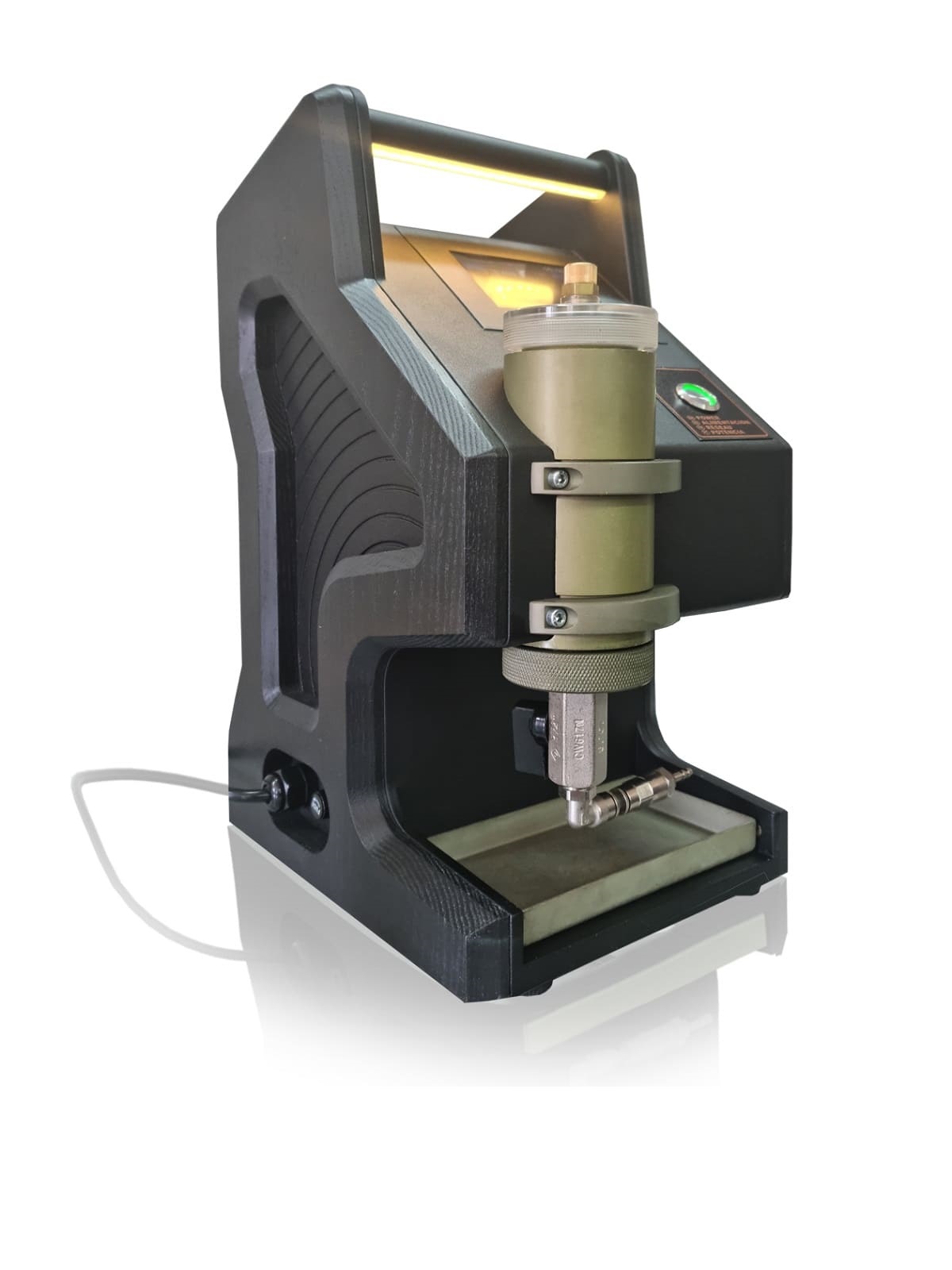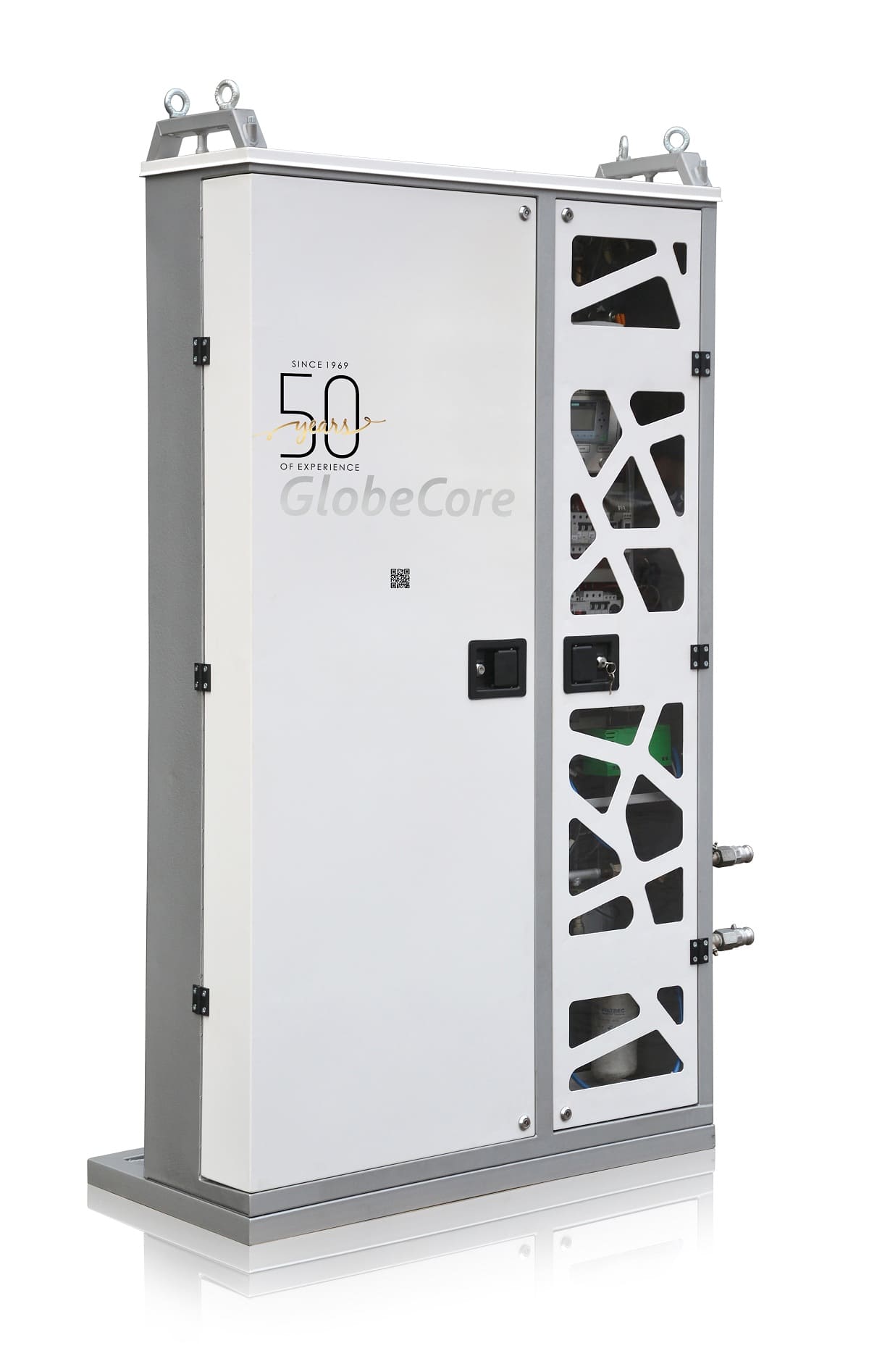Transformer oil is used in high-voltage equipment as an insulating medium due to its higher dielectric strength compared to gases, for example.
However, while in use, oils may experience a breakdown which means losing the ability to withstand high voltages. A breakdown poses a risk of failure to expensive electrical equipment: transformers, oil-filled cables, capacitors, switches, arresters, etc. In order to prevent a breakdown, a check for liquid dielectrics is carried out with the purpose of measuring the breakdown voltage. In this article, we will discuss how a breakdown of liquid dielectrics occurs, why the breakdown voltage decreases, and how transformer oil purification and check are carried out.
Breakdown of liquid dielectrics
A breakdown of liquid dielectrics is a complex phenomenon that is still under study. One of the main theories of onset is as follows. If a high voltage is applied to the dielectric (oil) for a long time, and the oil contains impurities, then these impurities are polarized and combined into chains that stretch along the electromagnetic lines of force. The chains become a channel through which electric current flows. The current heats up the liquid adjacent to the channel until it starts boiling, and a breakdown occurs through the formed gas channel.
In thoroughly purified oils, a breakdown may occur due to impact ionization of molecules. After a breakdown, the electrical insulating properties of oil are reсlaimed, but as a rule, its quality visibly deteriorates.
Transformer oil breakdown voltage
Check for dielectric properties of oil is carried out by taking samples and subsequent analysis thereof with determination of breakdown voltage, dielectric loss tangent, dielectric permittivity, etc.
Breakdown voltage is the minimum applied voltage at which a conductive channel is formed in the dielectric. Breakdown voltage is usually measured in kilovolts.
Аnother similar parameter — dielectric strength (breakdown voltage) — is used as well. Physically, dielectric strength is the voltage that must be applied to a sample to ensure its breakdown which is divided by the sample thickness. Dielectric strength is measured in kilovolts per millimeter.
What factors affect the transformer oil breakdown voltage?
Breakdown voltage is a very sensitive parameter in transformer oil, because it may be affected by various factors. These include:
- Contamination with mechanical impurities and wetness. The dirtier the oil, the lower its breakdown voltage.
- Viscosity. Along with a decrease in the viscosity of transformer oil, the breakdown voltage decreases as well.
- Temperature. With increasing temperature, the breakdown voltage of oil decreases. When applying the pulse voltage, this relationship is poorly pronounced. For deeply purified oils, the breakdown voltage and oil temperature relationship is of complex nature.
- Pressure. With increasing pressure, the breakdown voltage rises which is explained by a pressure increase in gas bubbles. The relationship is more pronounced in technically pure oil.
- Duration of exposure to voltage. The longer the oil exposure to voltage lasts, the lower the breakdown voltage is. The relationship becomes weaker in more deeply purified oils.
- Shape and area of electrodes, distance between electrodes. With different shapes of electrodes, fields of different heterogeneity degrees are created, and the greater the heterogeneity coefficient, the lower the breakdown voltage. With increasing area of electrodes, the breakdown voltage decreases, and with an increase in the distance between electrodes, it increases as well.
Transformer oil breakdown test
Transformer oil breakdown test is performed in a laboratory, but if the necessary equipment is available the breakdown voltage can be measured near the transformer.
Transformer oil breakdown check is performed in accordance with applicable standards. Those can be both national standards of the countries within which transformers are operated and international standards. IEC-60296 BDV-tester and ASTM BDV-tester are prevalently used.
Oil breakdown tester
GlobeCore provides global quality standards for equipment in the transformer maintenance sector, including laboratory liquid dielectric testers. TOR-80 oil breakdown tester is reckoned among them. It operates on the principle of gradual voltage step-up on the secondary winding of a high-voltage transformer from zero to maximum value or to a value at which a dielectric breakdown occurs. The high voltage shutoff time after breakdown does not exceed four microseconds. According to this indicator, TOR-80 transformer oil testing unit outperforms all existing instruments of similar intended purpose. The oil contained in the measuring cell has no time to burn underneath and to change its chemical composition which provides equal conditions for repeat measurements.
In terms of other characteristics and parameters, the best GlobeCore BDV-tester is not inferior to any of well-known equivalents. In TOR-80 settings, any of the applicable standards for electric testing methods (IEC 60156, ASTM D877, etc.) can be selected. Even if the standard has changed over time, the user can quickly make the necessary adjustments and continue testing the oil according to the relevant algorithm. Therefore, inexpensive GlobeCore BDV-tester can be used in any country of the world. Furthermore, liquid dielectrics of various origins with the breakdown voltage of not more than 80 kilovolts, made on the basis of petroleum, vegetable oils, or synthetically derived are tested by means of this instrument.
The instrument is compact-sized: 49 centimeters wide, 32 centimeters long, and 30 centimeters high, and supplied with built-in handles by means of which it can be moved inside the laboratory or easily carried from one room to another. The oil breakdown testing process is simple. An employee of the electrical laboratory must connect the device to the power mains, insert the measuring cell, fill it with oil, select the required standard, and start the process by pressing the appropriate button. TOR-80 BDV-tester will do the rest by itself in automatic mode, and the result of the first breakdown voltage measurement will be subsequently displayed in kilovolts after five minutes.
The tolerance of breakdown voltage measurements after a testing cycle does not exceed one percent. This accuracy is achieved due to technologies developed by GlobeCore and new industry standards.
At the same time, the instrument remains convenient and practicable. If necessary, the measurement results can be printed out by means of an integrated thermal printer, or the accumulated data array can be transferred using a USB flash drive from the internal non-volatile memory to a computer for subsequent statistical processing and visualization.
If the operating rules are followed, the use of TOR-80 is safe for laboratory staff. The top lid not only protects the samples and the operating zone from contamination, but is also equipped with a position monitor. When the lid is in “open” position, the test voltage rise is blocked, and an electric shock is prevented.
Before getting sent to laboratories of electric power companies, all the instruments are checked for compliance with technical requirements and specifications by testing the real oil samples with at least 900 measurements carried out for them which is equivalent to 150 testing cycles, as well as by verification using high-precision kilovoltmeters.
Oil testing with new TOR instrument manufactured by GlobeCore allows detecting a critical breakdown voltage drop and making a quick decision to change or purify the oil.
Continuous stream BDV-test
In addition to laboratory analyses, the possibility of detecting the oil breakdown voltage online, i.e. without taking samples, is of practical interest to owners of transformers and service organizations. GlobeCore manufactures an online BDV tester, or rather TOR-5, the entire diagnostic system which allows detecting the important parameters of transformer oil. TOR-5 is installed near the transformer and connected thereto. After connecting the instrument, the oil is continuously circulated in a closed loop through sensors. The sensors measure important oil parameters. In addition to the fact that these parameters are intrinsically diagnostic data, the additional indicators providing more complete insights into the transformer oil condition online are also calculated on their basis. One of the estimate indicators is the oil breakdown voltage.
All measured and calculated parameters are accumulated once a minute and available for viewing and analysis in a special web application that can be opened anywhere in the world with Internet access.


 TOR-2 Hydrogen and ...
TOR-2 Hydrogen and ... TOR-5 Online Transformer ...
TOR-5 Online Transformer ... TOR-80 (TOR-80 LSL) ...
TOR-80 (TOR-80 LSL) ...